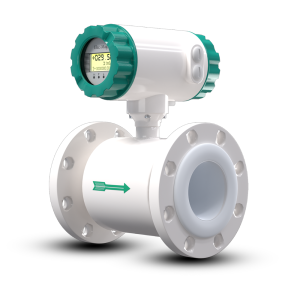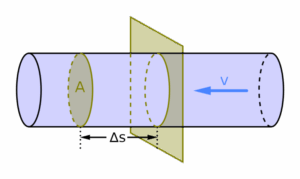
Flow measurement is at the heart of countless industrial processes. From water and wastewater treatment plants to oil and gas pipelines, and from pharmaceutical production lines to food and beverage manufacturing, industries rely heavily on accurate, reliable, and efficient flow meters. Among the many available technologies, two of the most commonly compared are the electromagnetic flowmeter (magmeter) and the turbine flowmeter.
A common question arises in engineering and procurement discussions: Which is more cost-effective, the electromagnetic flowmeter or the turbine flowmeter?
The answer depends on factors such as the nature of the fluid, installation requirements, maintenance costs, accuracy needs, and the total cost of ownership (TCO). In this comprehensive guide, we will break down these factors in detail to help you make the right choice for your application.
1. Understanding the Basics of Flow Measurement
Before diving into the comparison, it’s important to understand how these two flow meters work.
-
Electromagnetic Flowmeter: Works on Faraday’s law of electromagnetic induction, measuring flow based on the voltage generated as a conductive fluid passes through a magnetic field.
-
Turbine Flowmeter: Measures flow by placing a rotor inside the fluid stream. As the fluid moves, the rotor spins proportionally to the flow rate, and sensors detect the speed of rotation.
In short: Electromagnetic meters are non-mechanical, while turbine meters rely on moving parts.
2. Initial Purchase Cost
When it comes to upfront investment, turbine flowmeters typically have a lower purchase price. This makes them attractive for companies with tight budgets or when large numbers of flowmeters are required.
Electromagnetic flowmeters, on the other hand, tend to cost more initially due to the complexity of their technology. However, their long-term operational benefits often offset this higher starting price.
Verdict: If upfront cost is your only concern, turbine flowmeters are the cheaper option.
3. Installation and Setup Costs
Turbine flowmeters require precise installation conditions. They need long straight runs of pipe upstream and downstream to minimize turbulence. Any misalignment or debris in the fluid can cause inaccurate readings or even damage.
Electromagnetic flowmeters, by contrast, are generally easier to install. They can be mounted in various pipe orientations and don’t require long straight pipe runs. Since they have no moving parts, they’re less sensitive to installation errors.
Verdict: Electromagnetic flowmeters are more cost-effective during installation, saving both time and labor costs.
4. Maintenance and Downtime Costs
Maintenance is one of the biggest hidden costs in industrial operations.
-
Turbine Flowmeters: Their moving rotor is subject to wear and tear, especially when used with dirty or viscous fluids. Regular maintenance and eventual part replacement are unavoidable. Downtime for maintenance can disrupt operations and add costs.
-
Electromagnetic Flowmeters: With no moving parts, they require minimal maintenance. As long as the electrodes are kept clean, they can operate reliably for years with little attention.
Verdict: Over the lifetime of the device, electromagnetic flowmeters are more cost-effective because they reduce maintenance costs and minimize downtime.
5. Accuracy and Reliability
Accurate measurement is critical for process control, billing, and regulatory compliance.
-
Turbine Flowmeters generally provide good accuracy when measuring clean, low-viscosity fluids. However, accuracy drops significantly when dealing with slurries, suspended solids, or high-viscosity liquids. Wear over time also reduces their reliability.
-
Electromagnetic Flowmeters deliver high accuracy and stability across a wide range of conductive fluids, including dirty, abrasive, and corrosive liquids. This makes them suitable for challenging environments like wastewater and mining.
Verdict: For consistent and long-term accuracy, electromagnetic flowmeters are the better investment.
6. Fluid Compatibility
Fluid type plays a major role in cost-effectiveness.
-
Turbine Flowmeters are best for clean, low-viscosity liquids such as water, light oils, and fuels. They perform poorly with slurries, viscous liquids, or fluids containing debris.
-
Electromagnetic Flowmeters excel with conductive fluids (≥5 μS/cm), regardless of whether they are clean or dirty. They can handle sewage, pulp, slurries, and corrosive chemicals without issue.
Verdict: If your process deals with harsh or variable fluids, electromagnetic flowmeters will save money in the long run by avoiding frequent replacements and repairs.
7. Energy Consumption
Turbine flowmeters are mechanical and rely on the fluid’s velocity to spin the rotor. They introduce a slight pressure drop, which may increase pumping energy requirements.
Electromagnetic flowmeters create a magnetic field, which requires some power, but they do not create significant pressure drop. This can improve energy efficiency in large-scale operations.
Verdict: Over time, electromagnetic flowmeters can contribute to energy savings, making them more cost-effective.
8. Durability and Lifespan
Durability directly impacts cost-effectiveness.
-
Turbine Flowmeters often have a shorter lifespan due to mechanical wear, especially in demanding applications.
-
Electromagnetic Flowmeters can last decades with proper care, thanks to their robust, non-mechanical design.
Verdict: Longer lifespan = better return on investment. Electromagnetic flowmeters win.
9. Total Cost of Ownership (TCO)
When comparing total cost of ownership, it’s not just about the purchase price. You must factor in:
-
Initial investment
-
Installation costs
-
Maintenance and spare parts
-
Downtime costs
-
Accuracy and energy efficiency
-
Expected lifespan
While turbine flowmeters may seem cheaper at the start, the long-term TCO of electromagnetic flowmeters is often significantly lower, especially in industries handling conductive or dirty fluids.
10. Industry-Specific Considerations
Different industries prioritize different factors:
-
Water and Wastewater: Electromagnetic flowmeters are preferred for their ability to handle dirty, slurry-like fluids with high accuracy.
-
Oil and Gas: Turbine flowmeters are still popular for clean hydrocarbon fluids due to their low upfront cost.
-
Food and Beverage: Electromagnetic flowmeters are favored for hygienic, non-intrusive design and accuracy with viscous fluids.
-
Pharmaceuticals: Electromagnetic flowmeters meet strict sanitary requirements and ensure consistent dosing accuracy.
-
Chemical Industry: Electromagnetic flowmeters handle corrosive and aggressive fluids better than turbine meters.
11. Environmental and Sustainability Factors
As industries push for sustainable operations, flow measurement plays a role. Electromagnetic flowmeters, with their lower energy consumption, reduced maintenance needs, and longer lifespan, align better with green initiatives.
Turbine flowmeters, with frequent part replacements and energy losses from pressure drops, may contribute to higher environmental impacts.
12. Cost-Effectiveness Summary Table
| Factor | Turbine Flowmeter | Electromagnetic Flowmeter |
|---|---|---|
| Initial Cost | Lower | Higher |
| Installation | More complex | Easier |
| Maintenance | Frequent | Minimal |
| Accuracy | Good with clean fluids | Consistently high |
| Fluid Compatibility | Limited (clean, low-viscosity) | Wide (dirty, abrasive, corrosive) |
| Energy Efficiency | Pressure drop issues | Low energy loss |
| Lifespan | Shorter | Longer |
| TCO | Higher in the long run | Lower overall |
Conclusion
When evaluating which is more cost-effective, the electromagnetic flowmeter or the turbine flowmeter, the answer depends on your application.
-
If you are working with clean, low-viscosity fluids and only need a short-term, budget-friendly solution, a turbine flowmeter might make sense.
-
If you require long-term reliability, minimal maintenance, high accuracy, and the ability to handle a wide variety of fluids, the electromagnetic flowmeter is by far the more cost-effective choice.
In most industrial settings, especially where total cost of ownership and operational efficiency matter, electromagnetic flowmeters deliver better value despite their higher upfront cost.
We are a manufacturer of automatic flow meters with many years of experience in the industry. We have strong independent research and development capabilities and are a leader in the flow meter industry. Our main products include electromagnetic flow meters, vortex flow meters, turbine flow meters, ultrasonic flow meters, Coriolis flow meters, various solenoid valves, level meters, control units and valves, etc. Welcome to purchase –KFBEST





